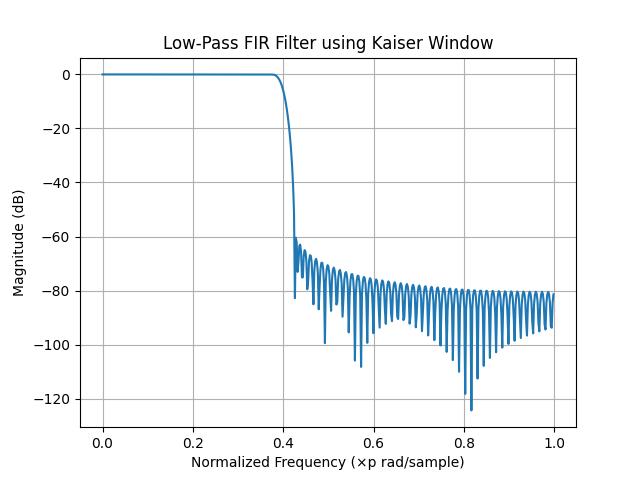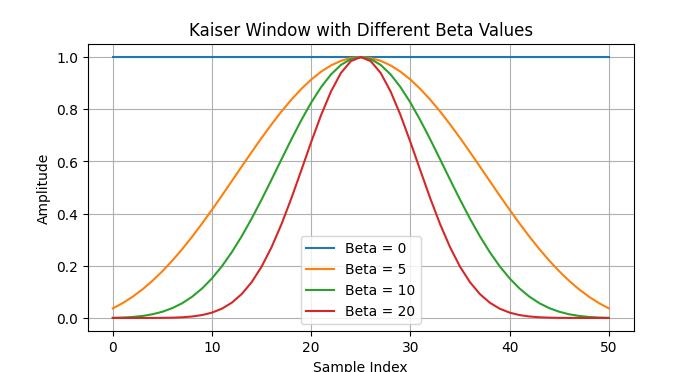
- SciPy - Home
- SciPy - Introduction
- SciPy - Environment Setup
- SciPy - Basic Functionality
- SciPy - Relationship with NumPy
- SciPy Clusters
- SciPy - Clusters
- SciPy - Hierarchical Clustering
- SciPy - K-means Clustering
- SciPy - Distance Metrics
- SciPy Constants
- SciPy - Constants
- SciPy - Mathematical Constants
- SciPy - Physical Constants
- SciPy - Unit Conversion
- SciPy - Astronomical Constants
- SciPy - Fourier Transforms
- SciPy - FFTpack
- SciPy - Discrete Fourier Transform (DFT)
- SciPy - Fast Fourier Transform (FFT)
- SciPy Integration Equations
- SciPy - Integrate Module
- SciPy - Single Integration
- SciPy - Double Integration
- SciPy - Triple Integration
- SciPy - Multiple Integration
- SciPy Differential Equations
- SciPy - Differential Equations
- SciPy - Integration of Stochastic Differential Equations
- SciPy - Integration of Ordinary Differential Equations
- SciPy - Discontinuous Functions
- SciPy - Oscillatory Functions
- SciPy - Partial Differential Equations
- SciPy Interpolation
- SciPy - Interpolate
- SciPy - Linear 1-D Interpolation
- SciPy - Polynomial 1-D Interpolation
- SciPy - Spline 1-D Interpolation
- SciPy - Grid Data Multi-Dimensional Interpolation
- SciPy - RBF Multi-Dimensional Interpolation
- SciPy - Polynomial & Spline Interpolation
- SciPy Curve Fitting
- SciPy - Curve Fitting
- SciPy - Linear Curve Fitting
- SciPy - Non-Linear Curve Fitting
- SciPy - Input & Output
- SciPy - Input & Output
- SciPy - Reading & Writing Files
- SciPy - Working with Different File Formats
- SciPy - Efficient Data Storage with HDF5
- SciPy - Data Serialization
- SciPy Linear Algebra
- SciPy - Linalg
- SciPy - Matrix Creation & Basic Operations
- SciPy - Matrix LU Decomposition
- SciPy - Matrix QU Decomposition
- SciPy - Singular Value Decomposition
- SciPy - Cholesky Decomposition
- SciPy - Solving Linear Systems
- SciPy - Eigenvalues & Eigenvectors
- SciPy Image Processing
- SciPy - Ndimage
- SciPy - Reading & Writing Images
- SciPy - Image Transformation
- SciPy - Filtering & Edge Detection
- SciPy - Top Hat Filters
- SciPy - Morphological Filters
- SciPy - Low Pass Filters
- SciPy - High Pass Filters
- SciPy - Bilateral Filter
- SciPy - Median Filter
- SciPy - Non - Linear Filters in Image Processing
- SciPy - High Boost Filter
- SciPy - Laplacian Filter
- SciPy - Morphological Operations
- SciPy - Image Segmentation
- SciPy - Thresholding in Image Segmentation
- SciPy - Region-Based Segmentation
- SciPy - Connected Component Labeling
- SciPy Optimize
- SciPy - Optimize
- SciPy - Special Matrices & Functions
- SciPy - Unconstrained Optimization
- SciPy - Constrained Optimization
- SciPy - Matrix Norms
- SciPy - Sparse Matrix
- SciPy - Frobenius Norm
- SciPy - Spectral Norm
- SciPy Condition Numbers
- SciPy - Condition Numbers
- SciPy - Linear Least Squares
- SciPy - Non-Linear Least Squares
- SciPy - Finding Roots of Scalar Functions
- SciPy - Finding Roots of Multivariate Functions
- SciPy - Signal Processing
- SciPy - Signal Filtering & Smoothing
- SciPy - Short-Time Fourier Transform
- SciPy - Wavelet Transform
- SciPy - Continuous Wavelet Transform
- SciPy - Discrete Wavelet Transform
- SciPy - Wavelet Packet Transform
- SciPy - Multi-Resolution Analysis
- SciPy - Stationary Wavelet Transform
- SciPy - Statistical Functions
- SciPy - Stats
- SciPy - Descriptive Statistics
- SciPy - Continuous Probability Distributions
- SciPy - Discrete Probability Distributions
- SciPy - Statistical Tests & Inference
- SciPy - Generating Random Samples
- SciPy - Kaplan-Meier Estimator Survival Analysis
- SciPy - Cox Proportional Hazards Model Survival Analysis
- SciPy Spatial Data
- SciPy - Spatial
- SciPy - Special Functions
- SciPy - Special Package
- SciPy Advanced Topics
- SciPy - CSGraph
- SciPy - ODR
- SciPy Useful Resources
- SciPy - Reference
- SciPy - Quick Guide
- SciPy - Cheatsheet
- SciPy - Useful Resources
- SciPy - Discussion
SciPy - signal.kaiserord() Function
Signal kaiserord() Function in SciPy
The scipy.signal.kaiserord() is a function in SciPy's signal processing module that estimates the filter order and Kaiser window parameter for a Finite Impulse Response (FIR) filter. It is useful when designing FIR filters using the Kaiser window method, which offers flexibility in controlling the trade-off between transition width and ripple.
The Kaiser window provides an adjustable parameter, , which allows for better control of the filter's side-lobe attenuation and main-lobe width.
Syntax
The syntax for the scipy.signal.kaiserord() function is as follows −
scipy.signal.kaiserord(ripple, width)
Parameters
Here are the parameters of the scipy.signal.kaiserord() function used to estimate the filter order and window shape parameter −
- ripple: The maximum allowable passband or stopband ripple in decibels (dB).
- width: The transition width of the filter in normalized frequency (0 to 1 range, where 1 represents the Nyquist frequency).
Return Value
The scipy.signal.kaiserord() function returns two values −
- numtaps: The estimated filter order (number of taps required).
- beta: The Kaiser window parameter used for designing the filter.
Designing a Low-Pass Filter
Designing a low-pass FIR filter using the Kaiser window involves first determining the required filter order and window parameter using the scipy.signal.kaiserord() function.
Here is an example of designing a low-pass FIR filter using the Kaiser window method −
import numpy as np
from scipy.signal import kaiserord, firwin, freqz
import matplotlib.pyplot as plt
# Desired specifications
ripple = 60 # Maximum ripple in dB
width = 0.05 # Transition width in normalized frequency
# Compute filter order and Kaiser window parameter
numtaps, beta = kaiserord(ripple, width)
# Design the FIR low-pass filter
cutoff = 0.4 # Normalized cutoff frequency
coefficients = firwin(numtaps, cutoff, window=('kaiser', beta))
# Compute frequency response
w, h = freqz(coefficients)
# Plot the frequency response
plt.plot(w / np.pi, 20 * np.log10(abs(h)))
plt.title('Low-Pass FIR Filter using Kaiser Window')
plt.xlabel('Normalized Frequency ( rad/sample)')
plt.ylabel('Magnitude (dB)')
plt.grid()
plt.show()
Below is the output of designing a low-pass FIR filter using the Kaiser window −

Choosing Kaiser Window Parameters
The Kaiser window provides an adjustable parameter that allows for control over the trade-off between the filter's main-lobe width and side-lobe attenuation. Higher values provide greater attenuation at the cost of a wider main lobe.
Here is an example of visualizing the effect of different Kaiser window parameters −
import numpy as np
import matplotlib.pyplot as plt
from scipy.signal import kaiser
# Define window lengths and beta values
N = 51
beta_values = [0, 5, 10, 20]
# Plot Kaiser windows for different beta values
plt.figure(figsize=(10, 6))
for beta in beta_values:
window = kaiser(N, beta)
plt.plot(window, label=f'Beta = {beta}')
plt.title('Kaiser Window with Different Beta Values')
plt.xlabel('Sample Index')
plt.ylabel('Amplitude')
plt.legend()
plt.grid()
plt.show()
Below is the output of visualizing the Kaiser window for different values −
